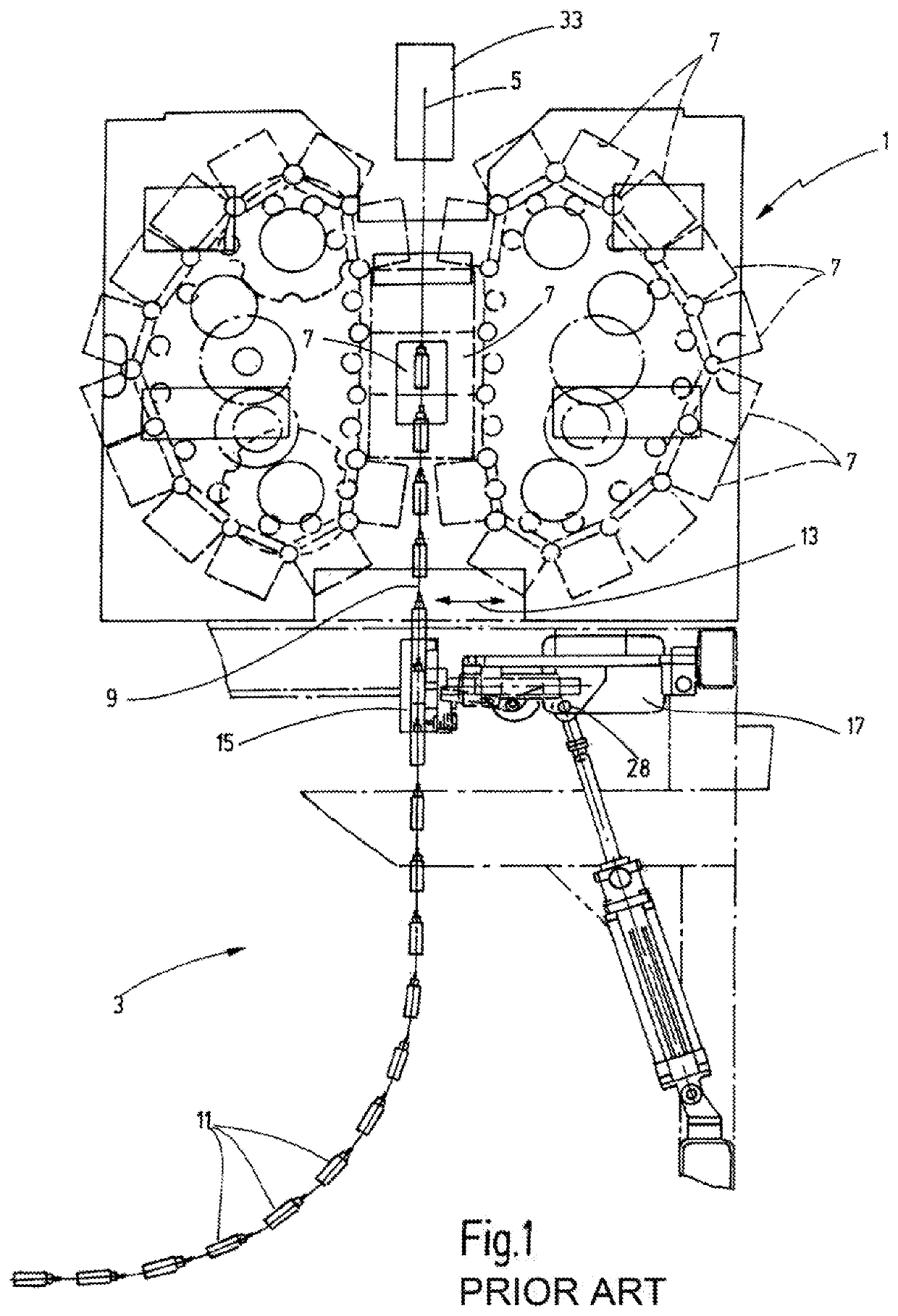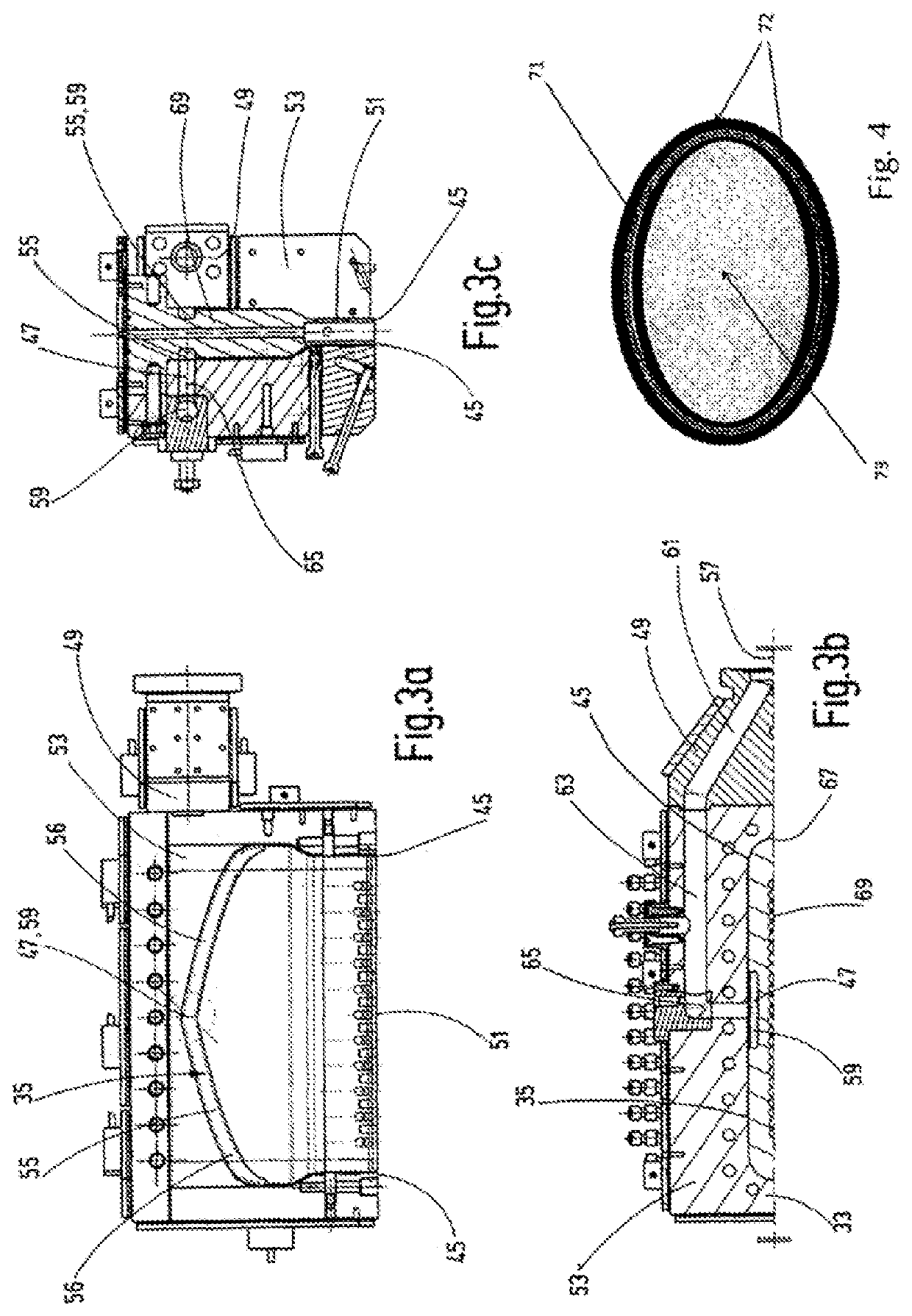Device for reducing microbiological contaminants of container products
a container and microbiological technology, applied in the field of containers and devices for reducing the microbiological impact of container products, can solve the problems of affecting the operation of the machine, so as to increase the energy requirement and improve the pressure resistance design
- Summary
- Abstract
- Description
- Claims
- Application Information
AI Technical Summary
Benefits of technology
Problems solved by technology
Method used
Image
Examples
Embodiment Construction
[0028]FIG. 1 depicts a production section 1 lying at the top in the figure with a demolding device 3 connected the production section at the bottom. The production section 1 is a machine device for carrying out a blow molding, filling and sealing method in accordance with the well-known Bottelpack® system, and in an embodiment in which various molding steps are carried out at various stations along a production line 5. In a type of carousel arrangement, individual molding parts 7, only some of which are numbered in FIG. 1, are moved in pairs towards one another on a kind of virtual circular arc track in order to form a closed production mold, and are moved apart from one another again in order to open the respective mold. Because machine devices functioning according to the Bottelpack® method are known per se, further description of the details of the production section 1 of FIG. 1 is not necessary.
[0029]As can also be seen from FIG. 1, the container chain 9 formed by the individual...
PUM
| Property | Measurement | Unit |
|---|---|---|
| temperature | aaaaa | aaaaa |
| temperature | aaaaa | aaaaa |
| temperatures | aaaaa | aaaaa |
Abstract
Description
Claims
Application Information
 Login to View More
Login to View More - R&D
- Intellectual Property
- Life Sciences
- Materials
- Tech Scout
- Unparalleled Data Quality
- Higher Quality Content
- 60% Fewer Hallucinations
Browse by: Latest US Patents, China's latest patents, Technical Efficacy Thesaurus, Application Domain, Technology Topic, Popular Technical Reports.
© 2025 PatSnap. All rights reserved.Legal|Privacy policy|Modern Slavery Act Transparency Statement|Sitemap|About US| Contact US: help@patsnap.com



